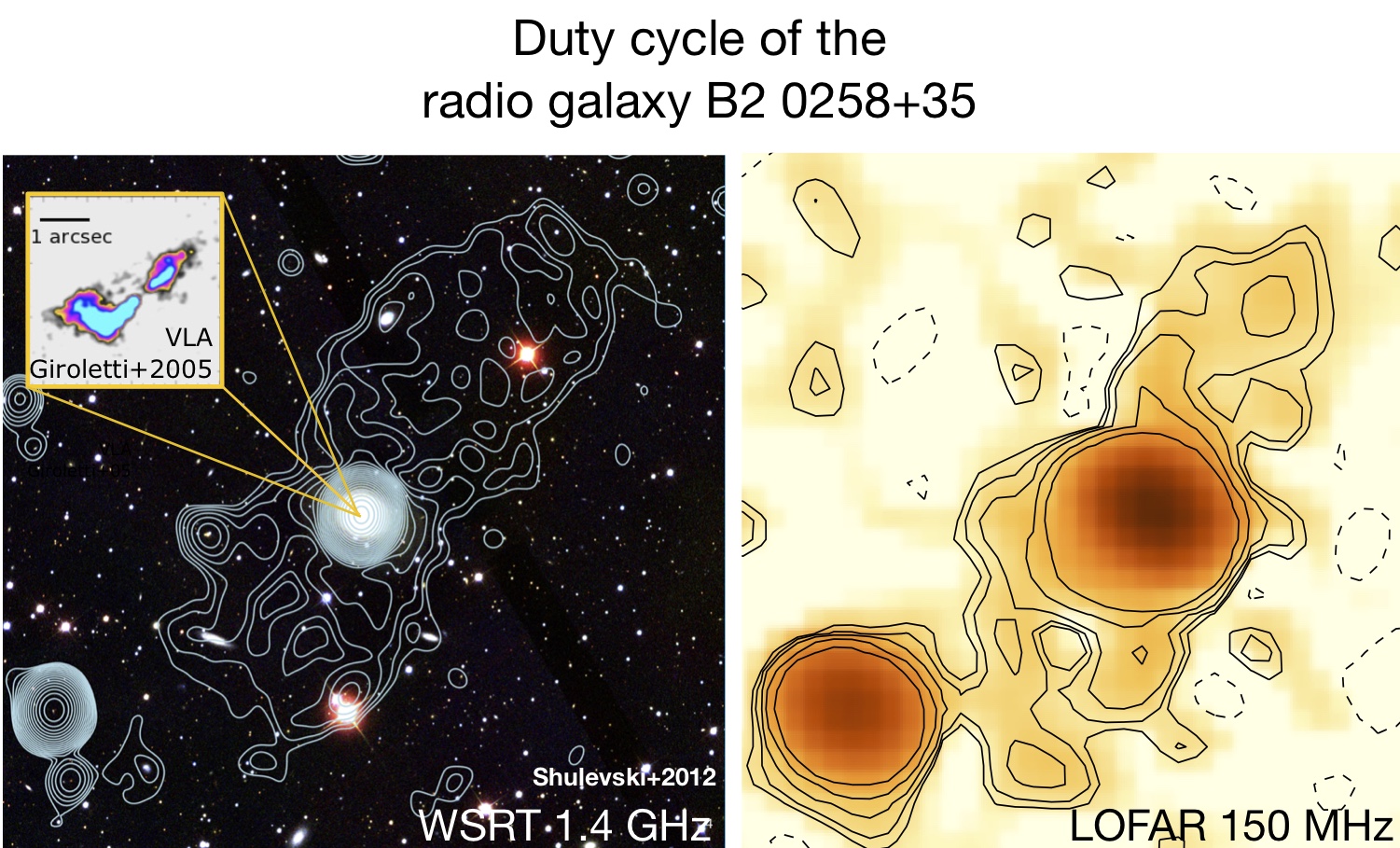Daily Image
30-08-2018The duty cycle of the radio galaxy B2 0258+35
| Submitter: | Marisa Brienza and Raffaella Morganti |
| Description: | Radio loud Active Galactic Nuclei are episodic in nature, cycling through periods of activity and quiescence. Sometimes we are lucky enough to observe the remnant plasma of a previous phase of jet activity together with a new pair of restarted jets. These kind of sources offer us the occasion to study the timescales of the jet life cycle, which are to date still poorly understood. Because the large-scale radio emission tend to fade in the remnant phase of the source, the great sensitivity of LOFAR is ideal to study these objects (see also Daily Image 19-09-2017 . In this work we have investigated the duty cycle of the radio galaxy B2 0258+35, which was suggested by Shulevski et al. 2012 to be a restarted radio galaxy based on its morphology at 1.4 GHz observed with WSRT (see figure on the left). The radio source consists of a pair of kpc-scale jets embedded in two large-scale lobes (240 kpc) with relaxed shape and very low surface brightness that resemble remnants of a past AGN activity. New LOFAR observations at 145 MHz have clearly detected the emission of these lobes (see figure on the right). The combination of these data with the WSRT and new observations with the Sardinia Radio Telescope at 6600 MHz has enabled us to investigate the spectral properties - and therefore the age - of the outer lobe over a very broad frequency range. Interestingly, the spectrum of both the Northern and Southern lobe is not ultra-steep (spectral index 0.5-0.7) or significantly curved as expected for an old ageing plasma. We suggest that mechanisms such as in-situ particle reacceleration, mixing or compression may be temporarily playing a role in preventing the spectrum from steepening. However, it seems unlikely that the outer lobes are very old remnants of past activity as previously suggested (with age > 80 Myr). We conclude that either the large-scale lobes are still fuelled by the nuclear engine or the jets have switched of no more than a few tens of Myr ago, allowing us to observe both the inner and outer structure simultaneously. This study shows the importance of combining morphological and spectral properties to reliably classify the evolutionary stage of low surface brightness, diffuse emission that low frequency observations with LOFAR are revealing around a growing number of radio sources. If you wish to learn more about this source have a look at our recent publication on Astronomy & Astrophysics Brienza, M., Morganti R. et al. 2018 Duty cycle of the radio galaxy B2 0258+35 . |
| Copyright: | ASTRON |
| Tweet |  |
